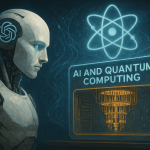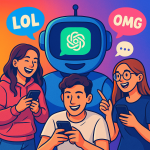The study of history has long relied on human interpretation—gathering facts from ancient manuscripts, archaeological finds, oral traditions, and written texts to piece together narratives of the past. However, as our access to historical data grows exponentially and the complexity of analysis increases, artificial intelligence is stepping into the role of a digital historian. GPT, with its ability to process vast text corpora and generate coherent narratives, is revolutionizing how we reconstruct and interact with history.
AI-powered language models like GPT are not merely tools for automation; they are becoming collaborators in reimagining and reinterpreting the past. From reconstructing lost voices to analyzing incomplete records, GPT enables a new kind of storytelling—one that is data-driven, multidimensional, and adaptive.
Understanding GPT’s Role in Historical Reconstruction
GPT (Generative Pre-trained Transformer) is trained on massive amounts of text data from books, documents, websites, and articles. By analyzing the linguistic patterns in this data, it can produce highly contextualized and accurate text outputs. In historical research, this means GPT can generate period-appropriate language, simulate historical figures’ speech styles, and produce plausible reconstructions of events where the details are scarce or fragmented.
One of the most valuable contributions of GPT is its ability to bring coherence to scattered information. For instance, when historical texts are incomplete or damaged, AI can fill in the missing sections using predictive modeling. It doesn’t invent history but builds on the data it’s given, offering insights that can guide human historians in their interpretations.
Applications of GPT in Historical Contexts
1. Reconstructing Lost Narratives
When primary sources are lacking or destroyed—due to war, time, or censorship—GPT can assist by reconstructing what might have been said, written, or recorded. For example, letters from unknown soldiers during World War I can be generated in the vernacular of the time, based on existing documentation from similar sources.
2. Reviving Historical Figures
Educational and cultural institutions are already using AI to simulate conversations with figures like Shakespeare, Cleopatra, or Abraham Lincoln. These reconstructions use historical texts as training material, allowing GPT to embody their voice, thought patterns, and worldview. Though these simulations are approximations, they open up powerful avenues for engaging audiences with history in interactive ways.
3. Analyzing Historical Texts
GPT can analyze large volumes of historical writing and identify thematic trends, biases, or shifts in tone over time. It can help historians map the evolution of political rhetoric, religious beliefs, or scientific ideas across centuries. This macro-level analysis offers a fresh lens on how civilizations thought and evolved.
4. Speculative and Alternative Histories
AI can also be used to explore “what-if” scenarios, creating branching narratives based on alternate decisions or events. What if the Library of Alexandria had never burned? What if the printing press had been invented a thousand years earlier? GPT can construct richly imagined outcomes that challenge our assumptions and encourage deeper reflection on pivotal historical moments.
Challenges and Ethical Considerations
Despite its potential, using GPT as a digital historian raises significant ethical questions. First and foremost is the issue of accuracy. AI models cannot distinguish between verified fact and speculative fiction unless they are clearly trained and guided to do so. Without proper sourcing, AI-generated historical narratives could unintentionally propagate myths or introduce anachronisms.
Furthermore, GPT may reflect the biases inherent in the data it was trained on. Historical texts often contain racist, sexist, or colonial perspectives that, if not filtered or contextualized, could be repeated or amplified in AI outputs.
Thus, while GPT can simulate historical voices, it cannot replace critical human judgment. Collaboration between AI and historians is essential to ensure that generated narratives are used responsibly—as supplements to research, not as replacements for it.
The Future of AI in Historical Research
Looking ahead, the role of AI in history will likely become increasingly immersive. As virtual and augmented reality technologies evolve, GPT could provide real-time, spoken narration for historical reconstructions in museums or educational apps. It could serve as a virtual guide through ancient cities, narrating events and answering questions based on curated historical data.
AI may also support efforts to decolonize history by helping uncover overlooked or marginalized voices. With the right data, GPT could help resurface stories from women, indigenous communities, and oppressed populations whose narratives have often been erased or neglected in traditional archives.
Conclusion
GPT is not a historian in the traditional sense—it doesn’t sift through archives or weigh evidence like a trained scholar. But as a digital assistant and narrative generator, it holds immense potential to enrich our understanding of the past. By reconstructing voices, simulating events, and reanimating lost stories, GPT offers a powerful new tool for making history more accessible, engaging, and multidimensional.
In the hands of thoughtful educators, researchers, and curators, AI like GPT can become a bridge between centuries, connecting modern audiences with the complexities and richness of human history in ways that are both rigorous and imaginative.



how can we ensure that the AI-generated versions of events or voices are truly accurate, and not simply imaginative interpretations that might misrepresent the past?
Lmao, no way… absolutely none the gpts is a total crapshoot 💀
AI as time machine: ChatGPT now writes history books 🤯
Would it be accurate? Maybe?🤷♀️
tbh doubt it… gpts just spit content wo thinkin
Okay i hope, what this technology gets int in right hands 😃
it ain’t good for nothin lol Its pretty much useless cause of all the gpt hallucinations
lol GPT s dope 4 history n stuff 👍 so epic!
gpt historian? lol ai sounds cool… til it makes stuff up👎👎